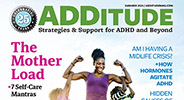How to Make Friends: A Guide for Kids with ADHD (and Their Parents, Too)
Nothing breaks a parent’s heart like seeing her child struggle to make friends. Sometimes, all our kids need is a little guidance to forge bonds and avoid ADHD-related social slip-ups. These 17 strategies will help.

Sometimes, children with attention deficit disorder need help figuring out how to make friends — and keep them. Parents can make a big difference — without stepping on toes — by helping a child with ADHD start a conversation or by “supervising from the window.”
Use these strategies to become your child’s friendship coach and guide his social development:
How to Make Friends
Get to the root of the problem. Children with ADHD often have little sense of how they’re perceived by their peers, and will commit social blunders without realizing it. Help them by discussing what went wrong, why it happened, and what your child could (not should) do differently next time. Be as sensitive with your child as you would be with a close adult friend — too much negative feedback can hurt your child’s self-esteem.
On the flip side, when your child has a successful interaction, congratulate him.
Watch your child closely. Whenever he’s playing with other kids, make sure you can see and hear what’s going on. Be ready to intervene if he picks a fight, starts telling fibs, or does something dangerous in an effort to impress others.
Consider team sports. Joining an ADHD-friendly team or organized activity can help children with ADHD realize everything isn’t about them. The lessons learned in sports can overflow into their social lives, and you may see your child start to develop healthy friendships.
Don’t just dive in. Call the coach of the sports team before the first practice. Ask him questions to figure out whether or not your child — and his ADHD — would be welcome. If you decide to take the plunge, go with your child to meet the coach and/or some teammates before the first get-together. Remember, transitions are hard for kids with ADHD.
[Free Parenting Resource: 14 Ways to Help Your Child Make Friends]
Beware of her competitive spirit. Children with ADHD can have some difficulty with competitive play — gloating when they win and raging when they lose. If your child has a hard time with these situations, encourage her to develop athletic skills that don’t require teamwork, like running, swimming, or martial arts.
Know they’ll find their way. Most socially isolated children will eventually learn to get a better handle on their behaviors and understand how friendships work. Once kids hit adolescence, they tend to act on the powerful urge to ‘fit in.’
There’s nothing wrong with having just a few friends. A child doesn’t need to be in the ‘in’ group or get invited to lots of parties to be happy. In fact, studies show that having even one close friend is all it takes for a child to develop social self-confidence.
Find a mentor. A child with ADHD may be more likely to take advice or instruction from a ‘big brother’ or ‘big sister’ than from you. Ask the big sibling of one of your child’s classmates if he will be an informal mentor to your child. Many schools understand the importance of mentors and have programs to connect kids.
Follow the love. If your child is a Minecraft fiend, look for other video-game fans to potentially be his friend. A shared interest will help your child feel confident and engaged.
[Download This Guide to Improving Your Child’s Social Skills]
Start out with one-on-one play. One-on-one play dates usually work best for children with ADHD. With threesomes, it’s easy for your child to feel left out — or ganged up on.
Seek out younger playmates. Children with ADHD tend to be more immature than their peers (and painfully aware of it). As your child is growing up, it’s often helpful if she develops friendships with children a year or two younger — this way, she won’t feel left behind.
Set a good example. Show your child how to act in social situations by making an effort to forge friendships with the parents of your child’s peers. Stay connected to the community through clubs or organizations as well.
Take teasing head on. Teasing, bullying and playful banter are an inevitable part of childhood, but kids with ADHD often don’t know how to respond. Parents should encourage their children to stand up to teasing, but to not overreact, which might escalate the problem.
Keep play dates short. For kids age 10 or under, three hours or less is probably best. Coach your child on how to behave beforehand, and talk about how things went after it’s over.
Let kids go — but not completely. Experts recommended that parents let teens sort out social situations on their own, but don’t back away completely. A recent study of seventh- through twelfth-graders suggests that teens who have close relationships with their parents — those who talk often, share activities, and are affectionate with each other — also tend to have good friendships.
Consider medication. If impulsive behavior — dominating play, interrupting, jumping from one thing to the next — keeps other kids away, medication is probably necessary. In fact, your child may need to be “covered” by ADHD medications even after the school day ends.
Make sure the dosage is right. Puberty, when all sorts of hormone changes kick in, is a good time to look at your child’s medication or dose. Often, what worked before puberty may no longer have the same effect.
[Get This Download: A Parent’s Guide to ADHD Medications]
SUPPORT ADDITUDE
Thank you for reading ADDitude. To support our mission of providing ADHD education and support, please consider subscribing. Your readership and support help make our content and outreach possible. Thank you.










